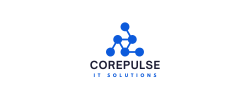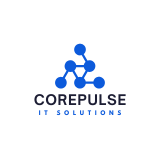Introduction
Cyber threats are evolving at light speed, and Australian small and medium enterprises (SMBs) are increasingly targeted by cybercriminals. With fewer resources than the behemoth corporations, SMBs must know about these threats and have strong defenses in place. This article explains the top cybersecurity threats SMBs face in Australia in 2025 — and how to stay safe.
Ransomware-as-a-Service (RaaS)
Ransomware-as-a-Service is a growing threat whereby cybercriminals rent out ransomware tools to conduct the attacks. Thus, even new hackers are able to put your business operations on their knees, asking for expensive ransoms. Australian SMBs have seen such attacks grow, with requests running into tens of thousands of dollars.
Prevention tips:
- Make regular, offline copies of your vital data.
- Use good endpoint security and email filtering.
- Train your employees on recognising malicious emails.

AI-Powered Phishing Attacks
Cybercriminals now make use of AI to generate extremely advanced phishing emails and voice message impersonations. Such impersonators trick employees into divulging passwords or sensitive data, which is more challenging to trace than traditional phishing.
Prevention tips:
- Implement email authentication protocols (DMARC, SPF).
- Regularly train staff to recognize phishing attempts.
- Use AI-powered email security tools.

Insider Threats (Malicious or Accidental)
Employees or contractors — through negligence or design — are the primary cybersecurity threat to SMBs. Cloud services and remote work environments increase the risk unless access control is ensured.
Prevention tips:
- Limit access through the principle of least privilege.
- Monitor user activity and audit on a regular basis.
- Encourage proper security culture through clear policies.

Supply Chain Risks
Australian SMBs rely often on third-party vendors, and this exposes them to vulnerabilities. These weak points are exploited by cybercriminals to get into your systems.
Prevention tips:
- Screen vendors’ security procedures before collaboration.
- Ensure open contracts with security requirements.
- Have third-party access under continuous monitoring.

IoT and Endpoint Device Vulnerabilities
The more devices that are connected to networks — like smart printers or security cameras — the more points of attack SMBs have. Many devices fail to get adequate security updates.
Prevention tips:
- Keep an up-to-date inventory of all devices.
- Segment your network to isolate exposed devices.
- Firmware and password update regularly.

Human Error and Cyber Hygiene
Weak passwords, misconfiguration, or delayed software updates are still among the top breach vectors in Australian SMBs.
Prevention tips:
- Implement multi-factor authentication.
- Implement password managers and strong policies.
- Automate patching wherever possible.

Conclusion
Cyber threats in 2025 are more sophisticated but Australian small and medium businesses can defend themselves through awareness, smart technology, and best practice. Act now to lock down your business from costly cyber attacks.
Interested in how secure your business is?
Interested in how to improve your business’s cybersecurity? Visit our IT Security Services page to learn more about how we can protect your business.
Ready to learn more about your risk? Contact us today for a an Australian small to medium business tailored cybersecurity risk assessment.


